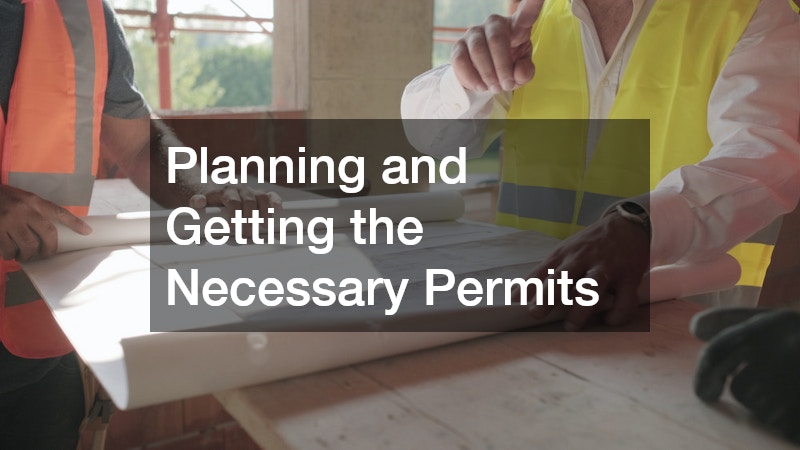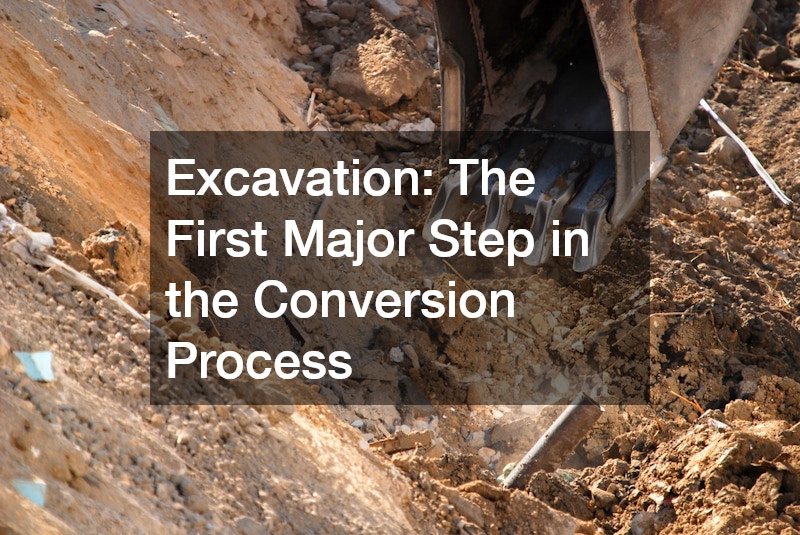
Turning your cramped crawlspace into a fully functional basement is one of the smartest ways to expand your living space without adding an above-ground addition. Whether you want an extra bedroom, a home gym, or a cozy entertainment area, converting a crawlspace can completely transform how you use your home.
But this project isn’t as simple as digging a hole and pouring concrete. It’s a complex process that involves excavation, structural work, plumbing, and waterproofing — and knowing what to expect makes a huge difference.
Here’s a detailed step-by-step guide that walks you through how a crawlspace to basement conversion works, what challenges you might face, and why this upgrade could be one of the most rewarding investments for your home.
Understanding the Difference Between a Crawlspace and a Basement
Before diving into the conversion process, it’s important to understand what sets a crawlspace apart from a basement.
A crawlspace is a shallow, unfinished area beneath your home — typically about two to four feet high. It’s designed to lift your house off the ground to prevent moisture problems and allow access to plumbing or wiring. While practical for maintenance, crawlspaces aren’t meant for living or storage due to their limited height, bare dirt floors, and poor ventilation.
A basement, on the other hand, is a fully or partially underground level that’s tall enough to stand and move around in — usually eight feet or more. Basements can be finished with drywall, flooring, and lighting, turning them into livable spaces.
In short:
- Crawlspaces are small, unfinished, and used for access and ventilation.
- Basements are deeper, structurally reinforced, and can serve as living areas or functional rooms.
Converting a crawlspace into a basement involves excavating below your home and reinforcing its foundation to safely create the additional height and usable square footage.
Why Homeowners Convert Crawlspaces into Basements

So why would anyone go through all that work? Simple — the benefits are hard to ignore.
1. Extra Living Space
The biggest motivation is the gain in usable square footage. Whether you need a home office, guest suite, or rental unit, converting your crawlspace gives you an entirely new floor to work with — all within your home’s existing footprint.
2. Increased Home Value
A finished basement can dramatically increase property value. Buyers love homes with additional livable areas, especially when those areas include bathrooms, entertainment zones, or storage space.
3. Better Home Stability and Moisture Control
Older crawlspaces can trap moisture and lead to wood rot, mold, or pest issues. During the conversion, these problems are addressed, and new waterproofing and drainage systems make your home healthier and more stable.
4. Energy Efficiency
A properly sealed and insulated basement can help regulate indoor temperatures, keeping your home warmer in winter and cooler in summer — potentially lowering energy bills.
Simply put, a crawlspace-to-basement conversion turns wasted potential into livable, valuable space while improving the overall health of your home.
Assessing Your Home’s Suitability for a Basement Conversion
Before any digging starts, your home must be evaluated to ensure it’s suitable for this type of project. This step is crucial to avoid costly mistakes or structural issues later.
Professional Inspection
Hire a structural engineer or a foundation specialist to inspect your crawlspace. They’ll check for:
- Foundation type and condition (concrete block, poured concrete, etc.)
- Soil stability and moisture levels
- Drainage patterns around your home
- Access points for excavation and debris removal
These assessments determine whether your home’s foundation can handle the excavation and reinforcement required.
Factors That May Affect Feasibility
Not every home is a good candidate for conversion. Key challenges include:
- Tight lot lines that make excavation equipment difficult to maneuver
- Poor soil conditions (like loose or sandy soil) that may require additional stabilization
- High water tables that increase waterproofing costs
- Low ceiling clearance that may need significant foundation lowering
A professional assessment helps you understand if conversion is feasible — and if so, what modifications or precautions are needed.
Planning and Getting the Necessary Permits

Like most major renovations, a crawlspace conversion requires careful planning and official permits before any work begins. This stage sets the foundation for a safe, code-compliant project that won’t cause headaches later on.
Design and Planning Phase
Work with an architect or contractor to draw up detailed plans. These will include:
- The proposed basement layout
- Excavation depth and foundation changes
- Plumbing, electrical, and HVAC plans
- Drainage and waterproofing systems
During this stage, it’s also helpful to consult an excavating contractor early in the process. They can evaluate the soil type, access points, and excavation logistics to ensure your project runs smoothly once digging begins. Their input can influence design decisions, such as how much clearance is needed and where temporary supports will go.
Once plans are finalized, they’ll be submitted to your local building department for approval.
Securing Permits
Most municipalities require permits for:
- Structural changes
- Excavation and grading
- Plumbing and electrical installations
- Egress windows (for safety and code compliance)
Depending on your property layout, you may also need input from a grading contractor to help prepare the site and ensure proper water drainage once the basement is complete. Their expertise can prevent long-term water issues and ensure the surrounding soil slopes safely away from your foundation.
Skipping this step can lead to fines, stop-work orders, or even issues when selling your home later. Getting the proper permits also ensures your project meets building codes, safety standards, and zoning regulations. While the process may feel tedious, it protects both your home and your investment.
Excavation: The First Major Step in the Conversion Process

Once permits are in hand, the real transformation begins — with excavation. This is the most labor-intensive and disruptive part of the entire process, setting the stage for your new basement’s foundation and structure.
How It’s Done
- Access is created: Contractors may dig a temporary entrance or remove a portion of your foundation wall to move equipment and debris.
- Soil removal: Workers carefully excavate the dirt beneath your home, deepening the space to the desired height — typically eight feet or more.
- Shoring and support: As the soil is removed, temporary supports or steel beams are installed to prevent the structure above from shifting or collapsing.
- Hauling away soil: Depending on your site, heavy equipment like mini excavators, conveyors, and wheelbarrows may be used to remove soil safely.
If your contractor doesn’t own all the necessary machinery, they might rely on heavy equipment rental services to source specialized tools like compact excavators, loaders, and dumpers. This approach can be more cost-effective for homeowners while still ensuring that professional-grade machinery is available for the job.
Equipment and Services Involved
Excavation often requires:
- Dumpster services for soil and debris disposal
- Grading services to level the surrounding ground afterward
- Crane or lifting services for moving heavy materials or machinery in tight spaces
In some cases, smaller projects might make use of excavator rentals for short-term digging and soil removal tasks, especially in confined or hard-to-access crawlspaces. Rental excavators are versatile and can be used for trenching, backfilling, or grading — depending on what the site requires.
Because excavation happens beneath your home, this step must be done with precision and care to maintain structural integrity. Even with all the right equipment, experienced operators and close supervision are key to keeping your home safe during this phase.
Reinforcing and Lowering the Foundation
After excavation, the next step is to reinforce and lower your home’s foundation to support the new basement. This phase is crucial for long-term stability.
Underpinning the Foundation
Underpinning is a process that strengthens and deepens the foundation walls. There are a few methods:
- Mass concrete underpinning: Excavating small sections beneath the foundation and filling them with concrete in stages.
- Beam and base underpinning: Adding reinforced concrete beams for added load distribution.
- Mini-piled underpinning: Using small piles drilled deep into stable soil layers for support (common in weak soils).
This gradual process ensures your home remains stable while the new lower foundation cures and sets.
Structural Reinforcements
Steel beams, rebar, and concrete walls may be added to reinforce load-bearing areas. In some projects, metal fabrication is used for custom brackets, railings, or supports that match your home’s architectural style.
This is also when contractors might install new footings and vapor barriers, setting the stage for waterproofing and drainage systems later.
Installing Waterproofing and Drainage Systems
Basements are naturally prone to moisture — and proper waterproofing is essential to keeping your new space dry and livable. Even a small amount of water seepage can lead to mold growth, foundation damage, or poor air quality, which is why waterproofing should never be skipped or rushed.
Interior and Exterior Waterproofing
- Exterior waterproofing: Involves applying a waterproof membrane to the outside of the foundation walls, often combined with drainage panels or protective coatings. This method helps block groundwater from penetrating the foundation and is usually completed during or right after excavation.
- Interior waterproofing: Includes installing vapor barriers, sump pumps, and sealants on the inside walls and floors. It’s especially effective for managing moisture that finds its way inside through tiny cracks or hydrostatic pressure.
Because every property has unique soil conditions and water tables, many homeowners hire professional basement waterproofing companies to handle this phase. These specialists can assess potential moisture risks, recommend the best combination of interior and exterior systems, and ensure the installation meets local building standards. Their expertise helps prevent future water damage and keeps your new basement dry year-round.
Drainage Systems
To manage groundwater, a French drain or perimeter drain system is installed at the base of the new foundation walls. These systems collect water and direct it toward a sump pump, which safely expels it away from your home.
Proper drainage prevents water buildup, mold growth, and structural damage — protecting your investment long-term and ensuring that your finished basement remains comfortable and problem-free.
Framing, Plumbing, and Electrical Work

Once the structural and waterproofing work is complete, your basement finally starts to look like a real room. At this stage, the space takes shape and the essential systems that make it functional are installed.
Framing the Space
Contractors install wooden or metal studs to outline walls, closets, and rooms. This framing defines your basement layout — whether it’s an open-plan family room or divided spaces like bedrooms, a home office, or even a small rental suite.
If your design includes steel framing or custom structural supports, the crew may bring in professionals who provide welding services to fabricate and secure metal beams or reinforcements. This ensures the basement structure can safely handle the weight of your home above while maintaining proper alignment and stability.
Plumbing and Electrical Installation
- Plumbing: New lines for bathrooms, laundry rooms, or sinks are installed, including drainpipes and vents. Some projects require pipe fusion techniques for connecting modern plastic piping systems. Many homeowners rely on professional plumbing services at this stage to ensure everything meets building codes and ties seamlessly into the existing water and sewer systems.
- Electrical: Wiring for outlets, lighting, and appliances is added according to local code requirements. Electrical panels may also need upgrades to handle the additional load, especially if your basement includes a kitchenette, entertainment system, or workout area.
This stage may also include HVAC ductwork, insulation prep, and rough-ins for internet or home theater systems. Once these utilities are in place, your basement is one step closer to becoming a comfortable, fully functional part of your home.
Finishing Touches
With the rough construction done, it’s time for the fun part — finishing your new basement so it’s comfortable and inviting.
Flooring Options
Because basements sit below grade, flooring should resist moisture. Popular choices include:
- Luxury vinyl planks (durable and waterproof)
- Engineered wood
- Epoxy or sealed concrete
- Ceramic or porcelain tile
Avoid traditional hardwood or carpet unless moisture control is exceptional.
Insulation and Wall Finishing
Insulation keeps your basement warm and energy-efficient. Spray foam or rigid foam insulation works best for below-grade walls. After insulation, drywall or wall panels are installed and finished with paint or wallpaper.
Lighting and Fixtures
Since basements have limited natural light, a thoughtful lighting plan is key. Combine recessed lighting, LED ceiling panels, and wall sconces to create brightness and depth. Adding larger egress windows can also improve ventilation and natural light — while meeting safety codes.
Decorative Details
The final design touches make your basement feel polished and cohesive. This might include trim work, handrails, shelving, or built-in features that complement your chosen aesthetic. For unique or modern finishes, custom metal work can be used to craft stair railings, light fixtures, or accent pieces that add a sleek, durable touch to the space.
Once flooring, lighting, and decorative details are complete, your new basement will feel like a completely new level of your home — comfortable, stylish, and ready to enjoy.
Cost, Timeline, and What to Expect After Completion
Like any major renovation, cost and timeline can vary widely depending on your home’s condition, location, and design goals.
Average Cost Breakdown
Converting a crawlspace into a basement typically costs $50,000 to $150,000 or more, depending on scope. Here’s a rough breakdown:
- Excavation and soil removal: $15,000–$30,000
- Foundation underpinning: $20,000–$50,000
- Waterproofing and drainage: $5,000–$15,000
- Plumbing, electrical, and HVAC: $10,000–$20,000
- Finishes (flooring, drywall, lighting, etc.): $10,000–$30,000
Homes with difficult access, poor soil, or high water tables may lean toward the higher end of that range.
Timeline
The process typically takes 3 to 6 months, depending on complexity.
- Planning and permits: 4–8 weeks
- Excavation and foundation work: 8–12 weeks
- Framing and utilities: 4–6 weeks
- Finishing: 3–6 weeks
It’s a long process, but the results are worth the wait.
After Completion: What to Expect
Once your new basement is ready, you’ll enjoy:
- Added property value and resale appeal
- More functional living space for family or guests
- Improved moisture control and air quality
- Greater overall stability for your home
You may also notice your home feels quieter and more temperature-stable, thanks to the additional insulation and lower-level mass.
In Summary
Converting a crawlspace into a basement is no small feat — but it’s one of the most transformative home projects you can undertake. From the first day of excavation to the final coat of paint, the process demands patience, professional guidance, and detailed planning.
Yet the payoff is immense: more room to live, more comfort, and a serious boost to your home’s value.
Whether you’re dreaming of a media room, gym, or guest suite, understanding how a crawlspace-to-basement conversion works is the first step toward making that vision a reality. With the right team and preparation, your underused crawlspace can become one of the most valuable spaces in your home.


